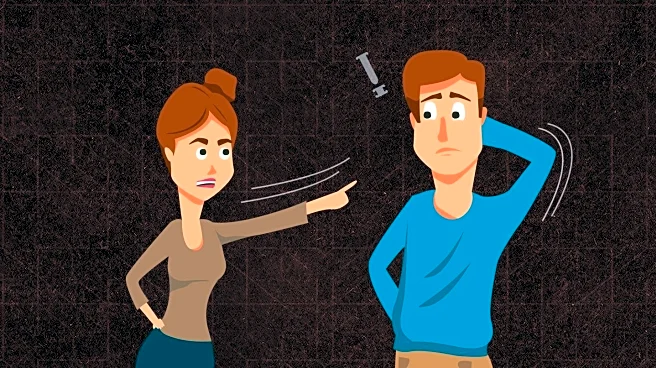What's Happening?
Passive-aggressive behavior is a common interpersonal challenge where individuals express frustration indirectly rather than openly. This behavior can manifest through subtle actions such as backhanded jokes, heavy sighs, or curt texts, leaving others uncertain about the true feelings involved. According to Fanny Tristan, LCSW, a psychotherapist, this behavior often stems from a fear of direct communication, especially when individuals are overwhelmed or afraid of negative reactions. The lack of clear communication can lead to assumptions and stress for those trying to interpret the behavior. Experts suggest several strategies to handle passive-aggressive interactions effectively, including considering the context, avoiding reciprocating passive aggression, and asking for clarification.
Why It's Important?
Understanding and managing passive-aggressive behavior is crucial for maintaining healthy relationships and effective communication. When individuals fail to address their feelings directly, it can lead to misunderstandings and increased tension in personal and professional settings. By employing strategies such as seeking clarification and maintaining calm communication, individuals can prevent unnecessary conflicts and foster a more open dialogue. This approach not only benefits interpersonal relationships but also contributes to a more supportive and understanding environment, reducing stress and promoting emotional well-being.
What's Next?
Individuals facing passive-aggressive behavior can apply the expert-recommended strategies to improve their interactions. By considering the context and asking for clarification, they can better understand the underlying issues and address them constructively. This proactive approach may lead to more direct communication and resolution of conflicts. As awareness of these strategies grows, it is likely that more people will adopt them, potentially leading to a cultural shift towards more open and honest communication in various settings.
Beyond the Headlines
Passive-aggressive behavior highlights broader issues related to communication and emotional expression. It underscores the importance of emotional intelligence and the ability to articulate feelings in a healthy manner. Addressing passive-aggressive behavior can also reveal deeper cultural and societal norms that discourage direct communication, prompting a reevaluation of how individuals are taught to express themselves. This could lead to changes in educational and therapeutic practices, emphasizing the value of direct and empathetic communication.











